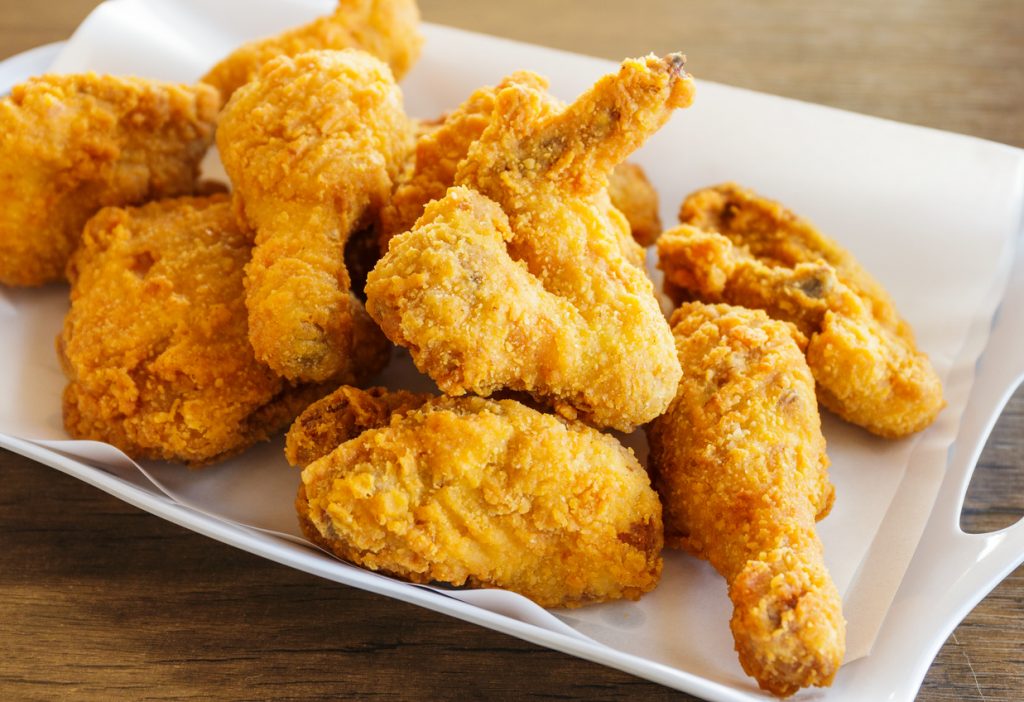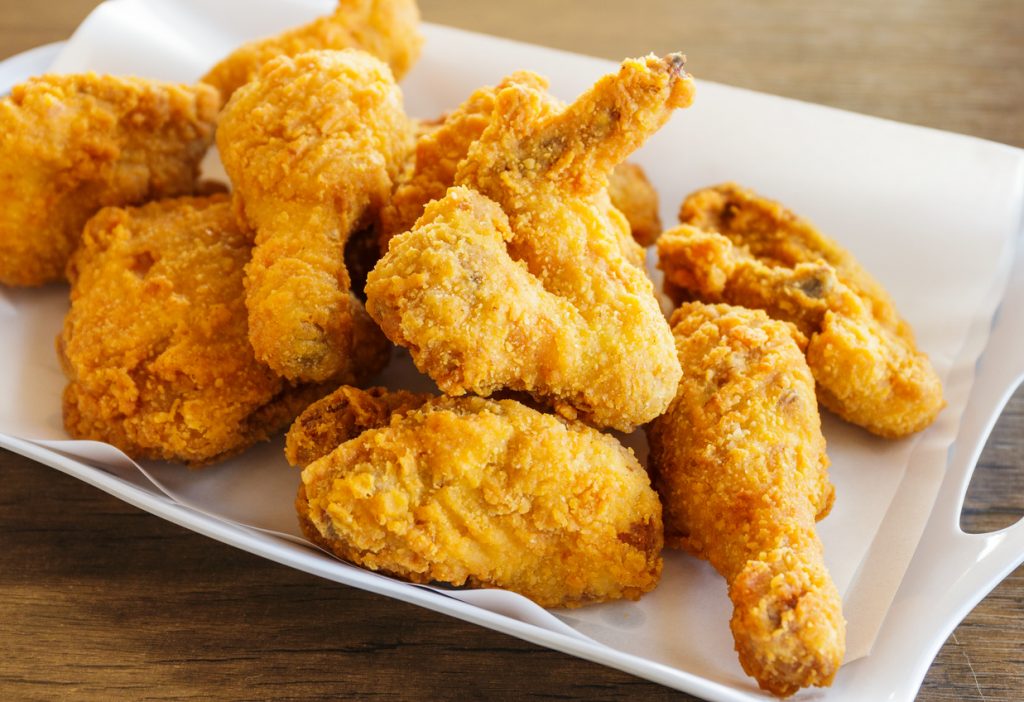Now there’s a holiday worth celebrating. Here’s a look back at what could be called the Golden Age of Fast Food Fried Chicken: the 1960s and ‘70s. Really.
Nowadays, Kentucky Fried Chicken is just one of many fast food franchises on the culinary landscape, but the fact that it even has that many competitors is a testament to the success of the chain. In the ‘60s, there were relatively few fast food restaurants, and when KFC arrived on the national scene it was a cultural phenomenon. “Finger lickin’ good!” became a catchphrase, founder/spokesman Col. Harland Sanders became a celebrity, and millions wanted in on the concept of eating good old-fashioned fried chicken without having to go through the messy and time-consuming trouble of making it themselves. Result: A boom in fried chicken restaurants over the next few years… almost all of which failed and faded into history.
Glori-Fried Chicken
John Jay Hooker, a Kentucky businessman and politician who wanted to compete with Kentucky Fried Chicken…which had gone national with the involvement of another Kentucky businessman and politician named John Y. Brown. So, Hooker approached singer Mahalia Jackson about using her name and image on a fried chicken chain. As the Beatles were to rock n’ roll, Mahalia Jackson was to gospel. Regarded as one the greatest singers of all time, Jackson was a superstar in the world of religious music in the 1960s. In 1968, Mahalia Jackson’s Glori-Fried Chicken opened up in cities primarily in the South, including Jacksonville, Houston, and Memphis. Within a few years, almost all of them had closed, owing to an SEC investigation into Hooker’s books.
Minnie Pearl’s Fried Chicken
Hooker went after multiple markets at once. While Mahalia Jackson’s Glori-Fried Chicken restaurants were placed primarily in cities with large African-American populations, Hooker’s other chain catered to the Deep South. At the same time that he opened Glori-Fried Chicken, Hooker launched Minnie Pearl’s Chicken. This one was branded with the country comedian best known for her appearances on Hee-Haw. (Minnie Pearl’s real name was Sarah Colley Cannon; Minnie Pearl was a character she played, who shouted “How-DEEE” and wore a hat with the tag still on it.) The effect of the SEC investigation destroyed Minnie Pearl’s Fried Chicken just as it had the Mahalia Jackson restaurants. All 500+ company-owned locations quickly closed, except for a single franchised one that hung around in Nashville until 2008.
Sister’s
A decade or so after the dust had settled in the competitive fast food chicken industry, Wendy’s decided to enter the race. In 1982, Wendy’s Famous Hamburgers nationally launched a sister restaurant chain called, what else, Sister’s. Selling primarily fried chicken and biscuits, the new chain couldn’t find a foothold in the crowded fast food marketplace. In 1987, a franchisee purchased 40 of 55 Sister’s locations for a relatively small $3 million. It didn’t help, and Sister’s was entirely gone by the mid-‘90s.
Chicken George
The biggest TV event of 1977 was Roots. Based on Alex Haley’s book about his family history as slaves in the South, Roots was the biggest TV event of 1977. Actor/dancer Ben Vereen was nominated for an Emmy for his portrayal of Chicken George, a Haley ancestor who got his name because he raised chickens for cockfighting at the behest of the slave owner. Not the sunniest inspiration for a fast food chain, but nevertheless, a restaurateur named Theodore Holmes cashed in on the popularity of Roots and opened a handful of Chicken George restaurants in Baltimore, Philadelphia, and Washington, D.C., in 1979. The chain was an immediate success, out-earning KFC in the cities where it was located, and quickly expanded through the South and to the West Coast. Mismanagement did in Chicken George: Holmes sold the company in 1987, it was sold again two years later, and was bankrupt by 1991.









